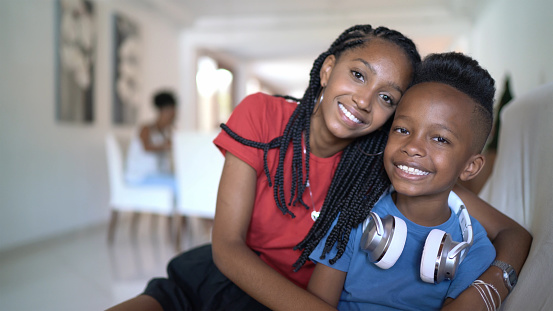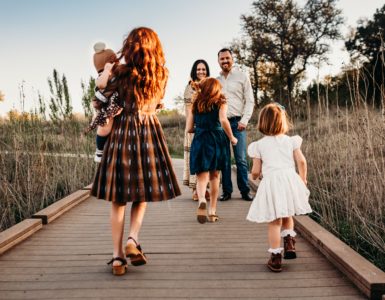According to The New Oxford American Dictionary, the definition of love is, “an intense feeling of deep affection.” The definition of language is, “the principal method of communication conveyed by speech, writing or gestures.” Therefore, I would interpret the meaning of love languages as the method by which one shows or feels the emotion of deep affection.
In his book, “The Five Love Languages”, Gary Chapman describes the following as the five languages of love:
- Words of Affirmation: saying supportive words to someone
- Act of Service: performing acts of kindness and being helpful in different situations without expecting anything in return
- Gift Giving: gifting items or experiences of meaning that show that you have an interest in the things important to them. Giving gifts can also show how much you care about someone when you choose them according to their desires and the emotion involved.
- Quality time: spending time together with someone while doing something they enjoy (even if you may not have a particular interest in it). Quality time does not have to be lengthy, but it does need to be meaningful.
- Physical touch: feeling close to someone throughtouch, holding hands, or a kiss. Physical touch can be sexual or non-sexual.
Depending on the type of relationship you are talking about, love can be shown in different ways. In a marriage or dating relationship, it is important to understand your partner’s love language. In the beginning of any relationship, there are often misunderstandings. Learning how your partner feels love and gives love can save many heartaches.
I have learned that I do not have one specific love language that speaks louder to me. I do know that I enjoy selecting special gifts for others. That is how I show love. But, I find happiness and pleasure in receiving all five types of love languages. This can be hard for those who choose to love me, as they are never quite sure of what type of affection I may be looking for.
One of my daughters summed up her feelings this way, “I think situations call for different types of love. There are times I am overwhelmed and feel like I’m drowning and failing as a mother. During those times, words of affirmation (and receiving some acts of service) give me the boost I need. Other times my emotional bucket is just empty and I don’t feel loved or appreciated. Quality time with family and friends away from my normal routine might be what I need at that time. There are times when I am feeling great and a quick hug from one of my kids helps me cherish the good times and spread my wealth of love. My needs change. I think it’s best not to put people/children in a certain category. Just because they need a hug one day doesn’t mean that is what they always want. They might not want to be touched on a different day, but they need to hear that they are loved and appreciated and they will come to you when they are ready for physical touch. I like physical touch from my husband and kids but not really from anyone else.”
Knowing the love language of your spouse and children can be difficult to navigate. Most likely, each child will require a different kind of affection. Finding out the love language of an adopted child maybe even more difficult. The age of the child and previous circumstances can alter their way of perceiving what love is. Even when children are raised in the same family, individual needs will vary.
When a child grows up in a loving, caring environment where love is shown freely on a daily basis by any of the five love languages, it may be easier for them to feel loved. When a child lives in an unstable, possibly harmful environment, it can be much harder to feel safe and loved.
Touch is the first language we use to communicate as infants, and it plays a critical role in social and behavioral development. According to Katherine Harmon of Scientific American (2010), “Many children who have not had ample physical and emotional attention are at higher risk for behavioral, emotional, and social problems as they grow up.”
When we adopted our daughter at the age of 2 ½, she was a complete mystery to us. Although we wanted to hug her and hold her in our laps, she had no desire for that. Instead, she would scream and flail her arms as if in pain. Over time, we learned to just let her be. When she wanted affection, she would come to us. One way we found a connection was by brushing each other’s hair. This seemed to be a way for both of us to calm down and enjoy our time together. We eventually discovered that because of things that may have happened in her past, she was putting up a safety zone around herself for protection. As an adult, she is more open to hugs—but only if it’s her idea! Speaking words of affirmation to her and spending quality time together seem to be how she feels love best.
According to Powerofpositivity.com, there are seven common traits that can be exhibited in people who may have been abused as infants or during early childhood. These are the years when the brain is developing and learning to control and react to certain situations. The seven traits are:
Social difficulties
Impulsive behaviors
Underachievement
Depression and anxiety
Poor emotional intelligence
Struggles with intimacy; will either attach themselves to someone or push them away
Aggression and misbehaviors
Our oldest son, who was adopted at birth, had no previous experience with feeling loved. He was easy to snuggle and hold in our laps. He had two older sisters who didn’t give him much of a chance to be left alone. He had to quickly adjust to being held a lot. I believe this led to his love language of physical touch. Whenever he is feeling down, he asks for a hug. When he walks into a room, you can expect a bear hug from the gentle, six-foot-four giant of a man. He makes you feel loved as you are wrapped up in his arms. He shares that he enjoys performing acts of service to others as his way of showing love. He wakes up early every morning to make his wife’s coffee just how she likes it. And he never leaves without asking if there is something he can do for you.
Quality time was one way we showed our children love as they were growing up. My husband is an accountant and was gone for long hours during tax season. Four months out of the year, he was virtually invisible. During the off-season, he worked as a caterer. Our children were often involved in this activity and learned to be dependable, hard workers because of it. They learned to cherish this time with their father. When there was time to play, we played hard. We were fortunate to be able to take family vacations and see places people dream about. Although they didn’t get their daddy for several months out of the year, they were guaranteed his full attention when we traveled together as a family. Those are the memories that they will treasure.
When I asked my biological children what their love language was, the two boys agreed it was quality time. My oldest daughter, who is twenty-one years older than her youngest sibling, often assumes the role of mother to her five younger brothers and sisters. She will do anything for them. Her acts of service often go unnoticed as she puts her own needs on hold while serving others. I think simple words of affirmation make her feel the most love.
Learning one’s love language can be a journey. The joy can be in discovering their passion without judgment along the way. Your partner or child may not see love in the same way that you do. There is no right or wrong way to express love, but it will be different for each of us. I want my family to always feel loved as in these words from Oliver Wendall Holmes, ”Where we love is home—home that our feet may leave, but not our hearts.”




